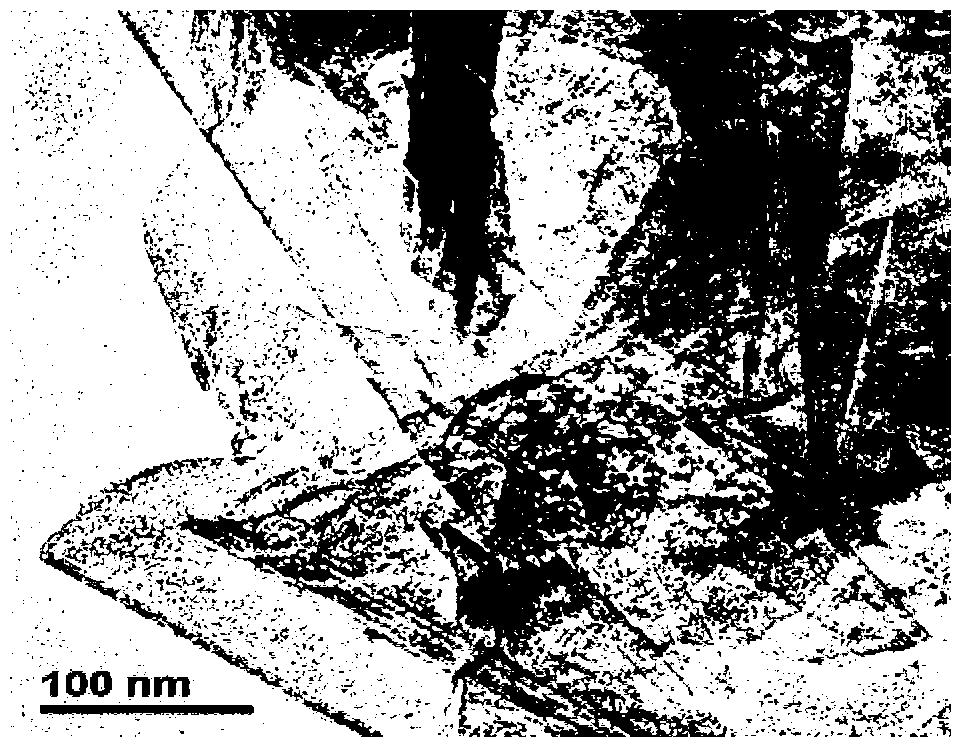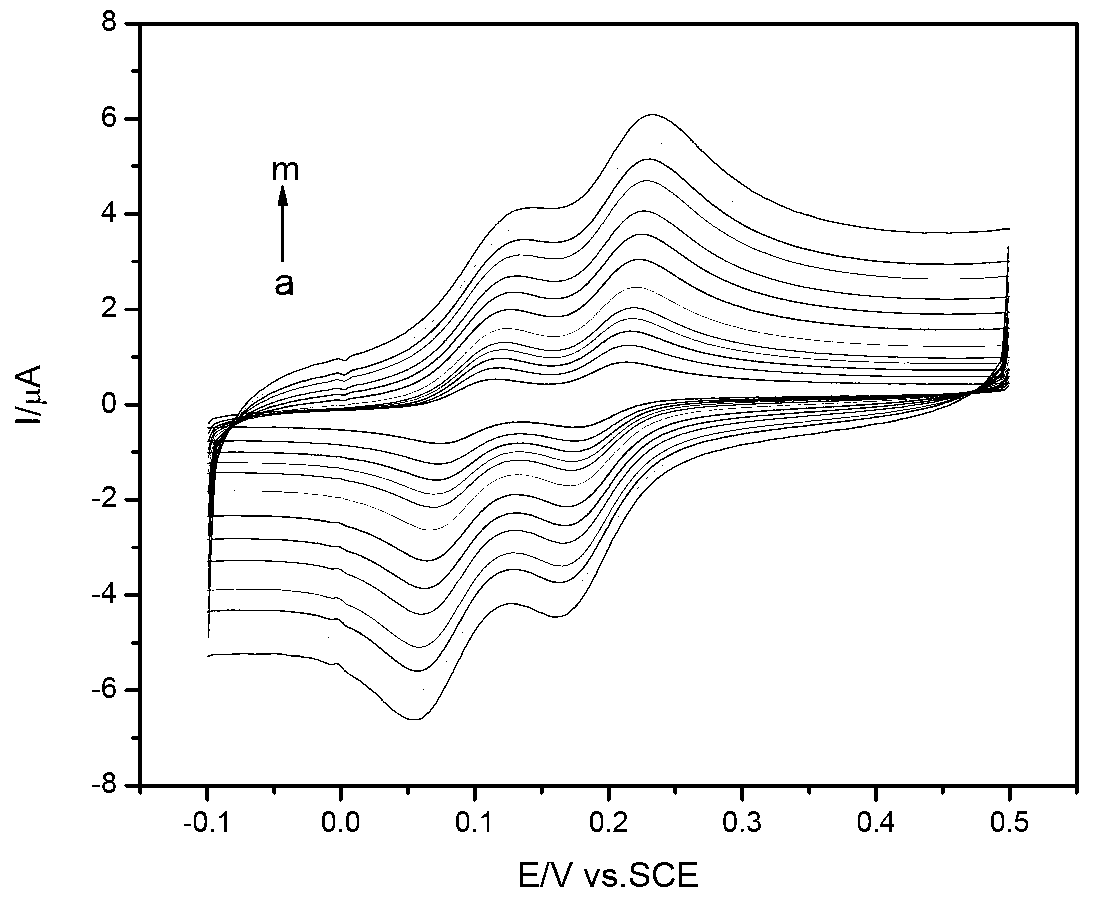Method for simultaneous detection of hydroquinone and pyrocatechol, and preparation method for applied nitrogen-doped graphene-modified glassy carbon electrode
A technology of nitrogen-doped graphene and glassy carbon electrodes, applied in the direction of material electrochemical variables, etc., can solve the problems of poor reagent stability, high instrument operating costs, and complicated operations, and achieve simple operation, low cost, and high detection sensitivity. Effect
- Summary
- Abstract
- Description
- Claims
- Application Information
AI Technical Summary
Problems solved by technology
Method used
Image
Examples
Embodiment 1
[0042] Preparation method of nitrogen-doped graphene (NG)
[0043] Graphene oxide (GO) is firstly prepared for later use: it is prepared by the Hummer method.
[0044] Assemble a 250 mL reaction flask in an ice-water bath, add an appropriate amount of concentrated sulfuric acid, add a solid mixture of 2 g of graphite powder and 1 g of sodium nitrate under stirring, and then add 6 g of potassium permanganate in portions, and control the reaction temperature not to exceed Stir at 20°C for a period of time, then raise the temperature to about 35°C, continue stirring for 30 minutes, then slowly add a certain amount of deionized water, continue stirring for 20 minutes, and add an appropriate amount of hydrogen peroxide to reduce the residual oxidant, making the solution bright yellow. Filter while hot and wash with 5% HCl solution and deionized water until no sulfate is detected in the filtrate. The filtrate was then dispersed under ultrasonic conditions for 2 h to obtain a bro...
Embodiment 2
[0047] Preparation method of nitrogen-doped graphene (NG)
[0048] Ultrasonic disperse 150mg GO in 30ml water, add a certain amount of concentrated HCl to form 1mol L -1 The solution. Then 100mg of pyrrole was added to the above solution, followed by 3ml containing 0.15g (NH 4 ) 2 S 2 o 8 1mol L -1 HCl solution was added to the above solution (graphene oxide solution: containing (NH 4 ) 2 S 2 o 8 1mol L -1 The volume ratio of HCl solution was 10:1), and after reacting at room temperature for 24 hours, the formed GO-ppy complex was filtered, washed, and dried under vacuum at 55 °C overnight. Finally, GO-ppy was thermally decomposed at 800 °C for 30 min in an argon atmosphere to obtain nitrogen-doped graphene.
Embodiment 3
[0050] Preparation method of nitrogen-doped graphene (NG)
[0051] Ultrasonic disperse 180mg GO in 36ml water, add a certain amount of concentrated HCl to form 1mol L -1 The solution. Then 100mg of pyrrole was added to the above solution, followed by 3.6ml containing 0.2g (NH 4 ) 2 S 2 o 8 1mol L -1 HCl solution was added to the above solution (graphene oxide solution: containing (NH 4 ) 2 S 2 o 8 1mol L -1 The volume ratio of HCl solution was 10:1), and after reacting at room temperature for 24 hours, the formed GO-ppy complex was filtered, washed, and dried under vacuum at 55 °C overnight. Finally, GO-ppy was thermally decomposed at 1000 °C for 30 min in an argon atmosphere to obtain nitrogen-doped graphene.
PUM
 Login to View More
Login to View More Abstract
Description
Claims
Application Information
 Login to View More
Login to View More - R&D
- Intellectual Property
- Life Sciences
- Materials
- Tech Scout
- Unparalleled Data Quality
- Higher Quality Content
- 60% Fewer Hallucinations
Browse by: Latest US Patents, China's latest patents, Technical Efficacy Thesaurus, Application Domain, Technology Topic, Popular Technical Reports.
© 2025 PatSnap. All rights reserved.Legal|Privacy policy|Modern Slavery Act Transparency Statement|Sitemap|About US| Contact US: help@patsnap.com



